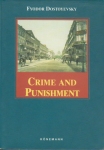Country: Ireland
Genre: Gothic Fiction, Horror Fiction
Publication Year: 1897
Edition Read: Penguin Classics. 2002 cover design. Introduction by Maurice Hindle.
First Read: Yes
Everyone knows the story of Dracula in some way; whether it is one of the many screen adaptions, The Simpsons Halloween special from about 15 years ago, or even the Twilight books. Anyone in the Western world can easily conjure up the image of Count Dracula skulking the halls of his castle in Transylvania. Dracula by Bram Stoker is an epistolary novel from the late Victorian Period that was part of a larger late 19th Century gothic revival – along with The Picture of Dorian Gray and The Hound of the Baskervilles. Dracula, for the most part, single-handedly created the vampire legend that still lives on today.
One thing that struck me about the novel was the scant presence of the character Dracula. Other than the opening chapters told from the point-of-view of Johnathan Harker while he is at his castle, a couple references about 2/3 of the way through, and then the last quarter or so, Dracula himself is nowhere to be seen, but his specter looms over every page of the novel.
As I was reading this, I put myself into the shoes of a reader from 1897, the year Dracula was first published. This would have truly been horrific without that inherent knowledge of the story that us in the 21st century all possess. The bizarre occurrences like the two holes in the neck, Dracula turning into a bat, the reanimation upon death after death at the hands of a vampire, and the stake through the heart and decapitation to kill the vampire. Stoker’s prose was so vivid and dark that he truly earned his retroactive moniker as one of the fathers of horror fiction.
When I read this novel, the primary thematic thread that seemed to be running throughout the novel is that of gender roles – specifically through the lens of female sexual liberation; the two poles of this thread were wholly embodied by the two female characters in the book: Lucy Westenra and Mina Harker. Lucy enjoys the adoration of three different men, taks in their bodily fluids – via blood transfusions – and shortly before her death is sexually aggressive towards her fiancé. Mina on the other hand is meek, deferential to the men in her life, and believes in an innate inferiority of women. Lucy, reanimated as a vampire and therefore completely sexually liberated, must be destroyed by polite and educated male Victorian society. Mina however, gets to live on with her husband and continue being the demure little lady bowing to her husband. To the Victorians, the vampire represents an individual completely disconnected from the everyday social mores of civil society, and that is the real monster.
In my post-reading research into the novel, and in reading the introductory essays in my volume, I was amazed at the continuing evolution and contradictory nature of the literary criticism of Dracula since it started to emerge in the 1950s. The critical consensus amongst the literati is practically nil when it comes to Dracula. This is not unusual in the world of literature, but generally there are some very broad agreed upon agreements. Dracula, however, is all over the place. Just as many critics argue that is a feminist masterpiece as there are who argue my point-of-view that this is the complete opposite. Some view this as a critic of colonization, some as a pro-Catholic novel, and I even came across one article that felt this novel was nothing but a critique of The Picture of Dorian Gray and its glorification of giving into the temptation of excess. Perhaps that just shows the power of Bram Stoker’s masterpiece.













































